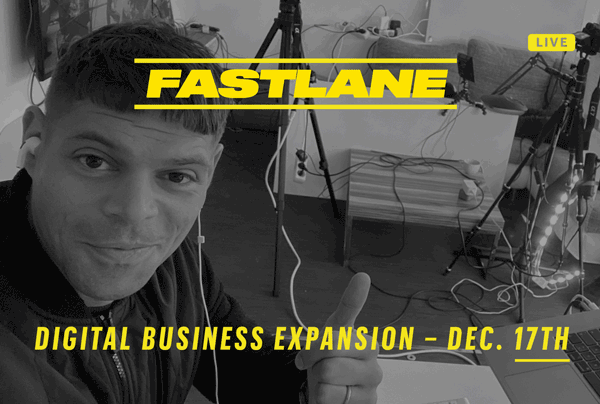The Next Generation of Batteries

3x increase of reach
5x reduction of charging time
First cars to deploy new Spatial Atom Layer Deposition – SALD – technology in 2022
R&D turns mass market: The nano coating creates a so-called "artificial solid-electrolyte interphase" (A-SEI), which is said to have a significantly better performance than previous SEI. This should not only affect the capacity and the charging speed. Durability and safety should also benefit. The SALD technology should also work with the solid-state batteries currently under development. This would significantly improve safety once again.
In general, the atomic-thin three-dimensional surface coating should work with all cathode materials currently being considered, tested or produced by battery manufacturers.

How Spatial ALD works – image by SALD BV
The technology was developed in a joint project between the German Fraunhofer Institutes and the Dutch government research organization The Netherlands Organisation (TNO), while the company itself has its roots in solar technology: According to the company’s homepage, SALD is a spin-off of SoLayTec, which has developed and sold a similar coating process for the mass production of solar panels. The machines are therefore mainly used in China. For the battery coating, SoLayTec has worked closely with Fraunhofer institutes and the TNO.

The ultimate goal of SALD is a Solid State battery that is lighter, safer, and stronger than existing batteries – image by SALD BV
The technology is not only suitable for electric cars, but also for smartphones, smartwatches and other battery-powered devices. For example, SALD batteries could provide for smartphones that only need to be charged once a week.
>> Learn more here
RELATED CONTENT
Our founder Thomas Daiber and his long-time companion in EV charging entrepreneurship, Jacob van Zonneveld, sat down to discuss their journeys from rural villages to mobility entrepreneurs in Berlin.
We sat down with Gunnar Froh to chat about data, mobility, and building company culture. Gunnar is the Co-founder and CEO of Wunder Mobility, a leading software and service provider in shared and on-demand mobility.
Our founder Thomas and co-host Newton invited Holger Weiß for a chat. Holger is the CEO and founder of German Autolabs. He illuminates the ups and downs of building innovative transportation ventures in Berlin.
Say ‘Hi’ to virtual business insights for future mobility executives: Here is your chance to access specific expert knowledge and best practices to enter the digital energy market with EV customers
Say ‘Hi’ to virtual business insights for future mobility executives: Here is your chance to access specific expert knowledge and best practices to enter the digital energy market with EV customers
New Mobility orientation workshop-series – to help you steer your businesses with focus and confidence, Cosmic Cat Group now offers a compass workshops series
Learn from best: In Fastlane Plus – Smart Charging – Europe’s leading companies in the domain shared lessons learned of their years in the market.
In this webinar, you will learn methods and principles to streamline your digital business expansion.
Not unlike ASML – the world’s sole manufacturer of the most advanced equipment critical to modern chipmaking – SALD BV is setting out to redefine a most critical position within the global emobility ecosystem
Learn research perspectives, methods and very practical tips for the next decade of electromobility: impulses for your business model and product development
Learn from best: In Fastlane Plus – Sales and Expansion Tactics in EV Charging – three executives biz-dev champion share lessons learned in 50 years of EV charging.
Thomas Daiber is speaking on two panels about monetization in EV Charging – live on November 4th at this year’s AUTONOMY digital conference.
Manoeuvring in the digital era: A strategy guide by Paul Gumienny. Five insights followed by one webinar to help executives future-proof their digital fleet strategies
Nice to read with user experience central, instead of technical or administrative developments.
On September 10th, we shed light on the opportunities and challenges in smart charging with executives from Europe`s leading companies in the domain.
Rethinking e-mobility and fleet applications to apply new business models and stack thinking: The electric vehicle becomes a beautiful hardware base and ideally inter-changeable
In this webinar executives and business strategists gain essential insights to success drivers and service differentiators in the very special industry of digital fleet sharing services.
Manoeuvring in the digital era: A strategy guide by Paul Gumienny. Five insights followed by one webinar to help executives future-proof their digital fleet strategies
Manoeuvring in the digital era: A strategy guide by Paul Gumienny. Five insights followed by one webinar to help executives future-proof their digital fleet strategies
Manoeuvring in the digital era: A strategy guide by Paul Gumienny. Five insights followed by one webinar to help executives future-proof their digital fleet strategies
On September 3rd, we shed light on the global business development & sales tactics of best-in-class sales executives of the EV charging sector.
Manoeuvring in the digital era: A strategy guide by Paul Gumienny. Five insights followed by one webinar to help executives future-proof their digital fleet strategies
The electrification of the powertrain brings two industries closer together that have had few touchpoints over the last 100 years.
The electrification of the powertrain brings two industries closer together that have had few touchpoints over the last 100 years.
Say ‘Hi’ to virtual business insights for future mobility executives: Here is your chance to access specific expert knowledge and best practices
Reuters article about the latest rise of EV charging compared to EV sales, including our founder's statement.
Say ‘Hi’ to virtual business insights for future mobility executives: Here is your chance to access specific expert knowledge and best practices.
In his electrive.net live keynote, our founder Thomas shared insights from over 10 years of experience in the EV charging domain.
Insights & reflections for market participants in the field of electric vehicle charging.
In this webinar EV charging & e-mobility executives gain competitive advantage. Secure your spot, now!






























